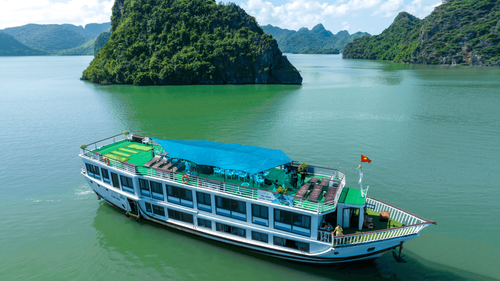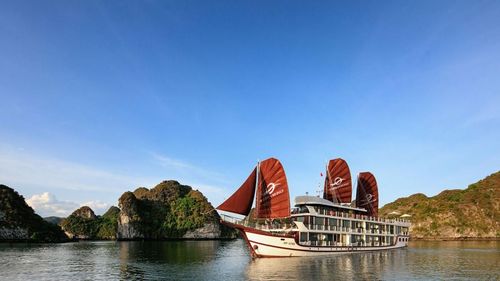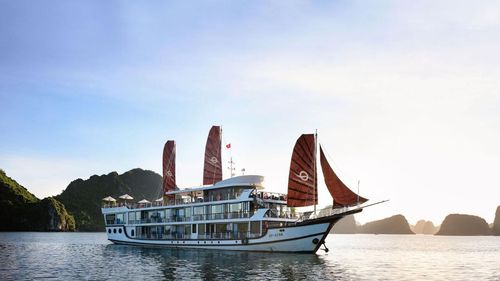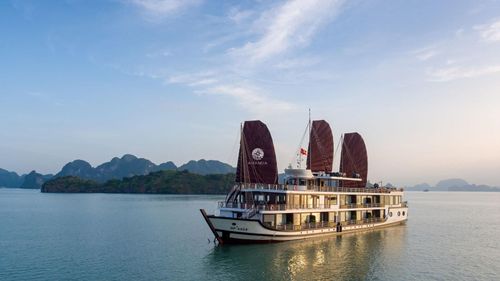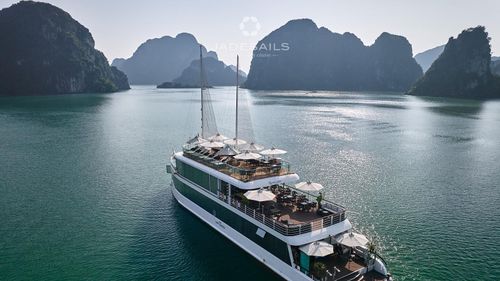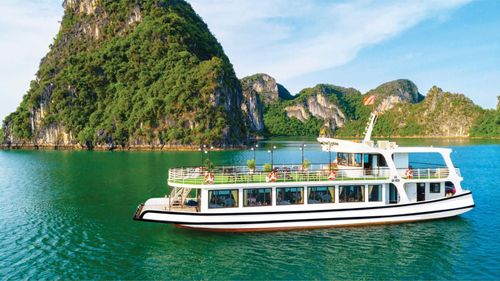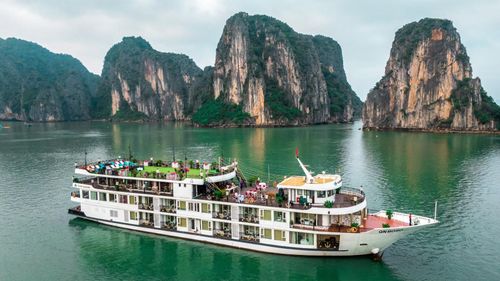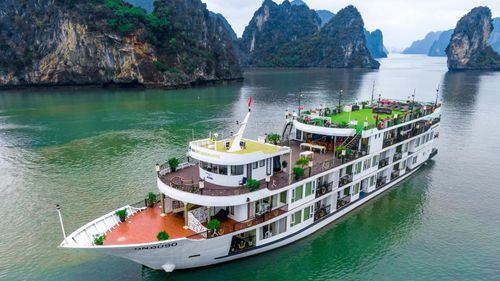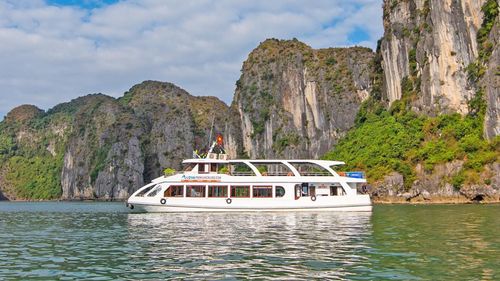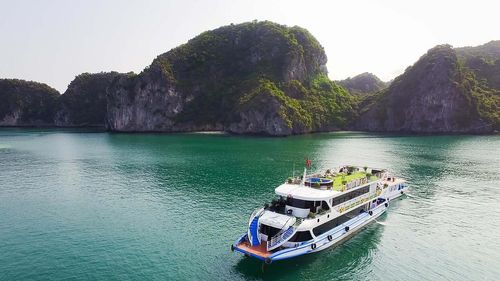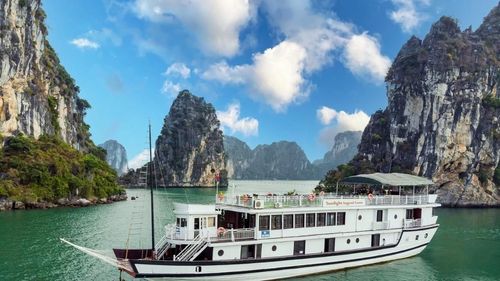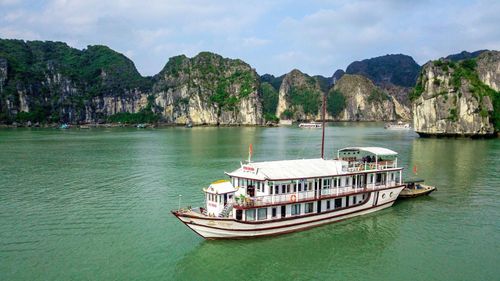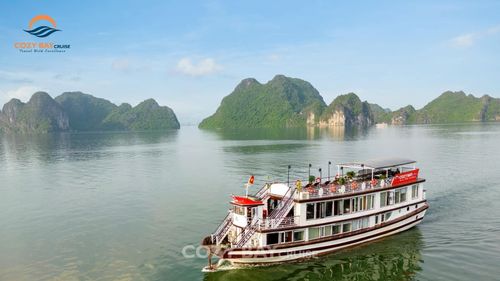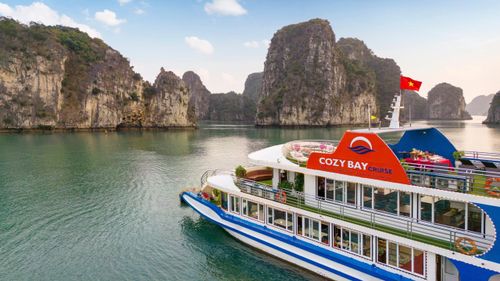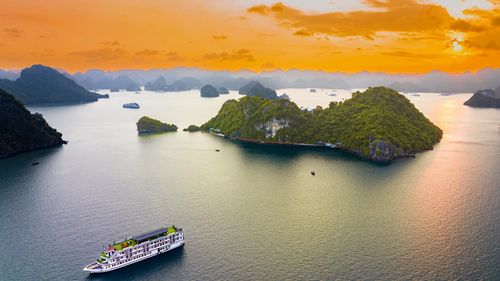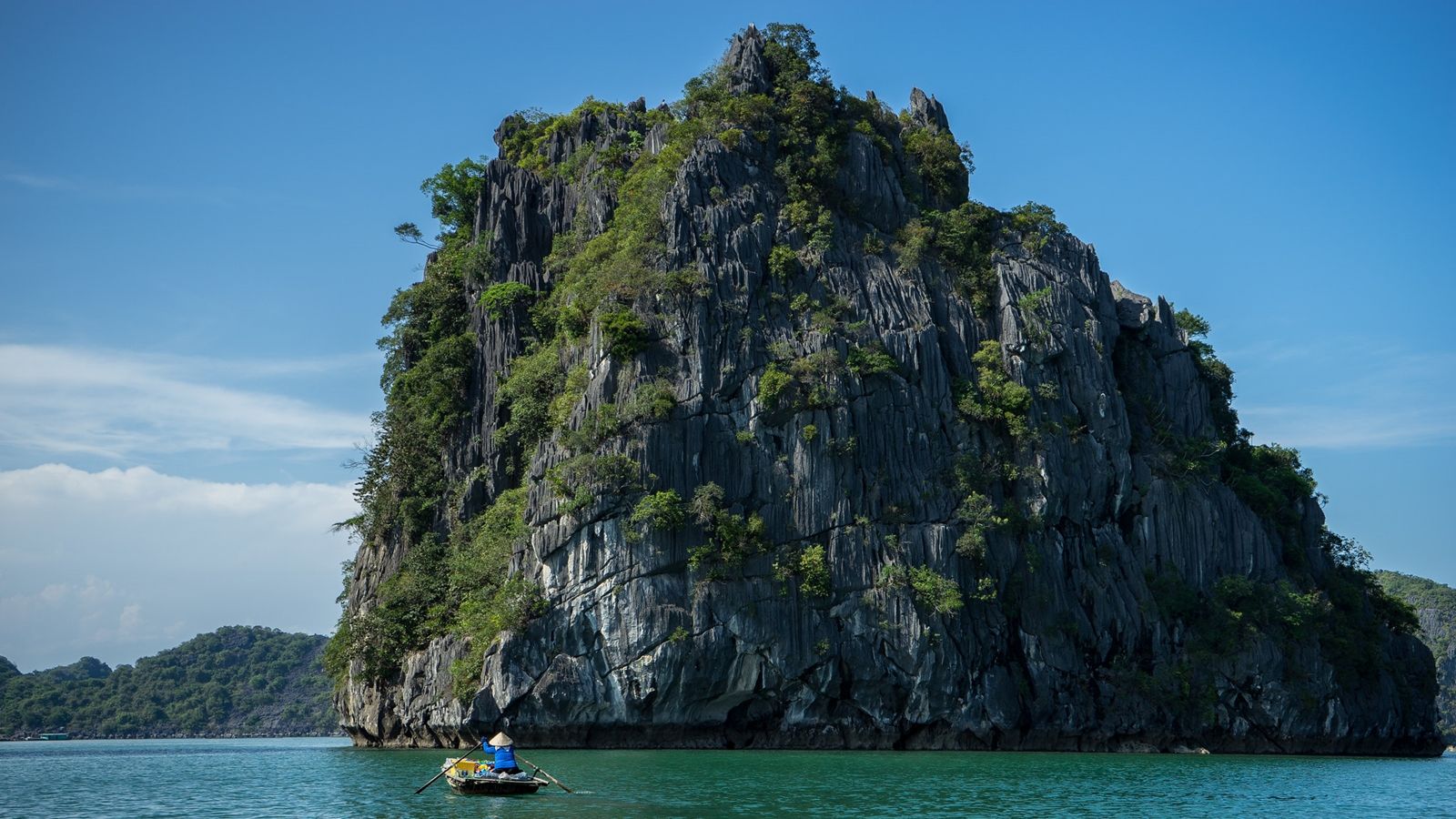
Halong Bay
Ha Long Bay lies in the northeast of Vietnam, forming the western boundary of Bac Bo Gulf. It encompasses the waters around Ha Long City and Cam Pha Town, as well as a portion of Vân Don island district, with Cat Ba Island adjacent in the southwest. Stretching along its western edge is a coastline spanning 120 kilometers. Positioned between 106°58' to 107°22' east longitude and 20°45' to 20°50' north latitude, the bay covers an area of 1553 square kilometers. Within its expanse are 1969 islands of varied sizes, with 989 already named.
The islands within Ha Long Bay predominantly consist of limestone and schist formations, situated mainly in two key areas: the southeastern expanse of Bái Tử Long Bay and the southwestern region of Ha Long Bay. These islands, dating back between 250 to 280 million years, exhibit the ancient geological characteristics of the site. They are the product of numerous tectonic movements over time, resulting in the formation of karst landscapes. Erosion and weathering processes have sculpted these karst formations, giving rise to the globally renowned Ha Long Bay.
In a relatively compact area, thousands of islands emerge, resembling sparkling emeralds adorning the pristine blue waters. The concentration of stone islands creates awe-inspiring vistas, adorned with world-renowned caves, establishing Ha Long Bay as a focal point of natural heritage. Encompassing Ha Long Bay and a segment of Bái Tu Long Bay, the designated area spans 434 square kilometers and is home to 775 islands. This expanse takes on the shape of a colossal triangle, with Ðầu Gỗ Island to the west, Ba Hầm Lake to the south, and Cống Tây Island to the east, defining its boundaries.
Viewed from above, Ha Long Bay resembles a vibrant, intricate artwork, crafted by the forces of nature. The myriad stone islands stand as magnificent sculptures, each bearing unique and captivating forms. From the likeness of a human head at Hòn Ðầu Người to the dragon-like silhouette of Hòn Rông, these natural wonders evoke a sense of wonder and admiration. Amidst the waves, these islands exude both strength and grace, transporting observers to a realm of enchantment and legend.
Within the labyrinthine formations, a wealth of breathtaking caves awaits exploration, including Thiên Cung, Ðầu Gỗ, Sửng Sốt, Trinh Nữ, and more, resembling grand palaces crafted by nature's hand. Revered by poets and intellectuals throughout history, Ha Long Bay has been hailed as a marvel of the Earth, a testament to the indescribable beauty of nature's creations.
Beyond its scenic splendor, Ha Long Bay is intertwined with Vietnam's rich history, from the bustling trade hub of Vân Ðồn in the 12th century to the legendary battles along the Bạch Đằng River. Additionally, the region boasts archaeological sites like Ðộng Mang, Xích Thổ, Soi Nhụ, and Thoi Giếng, offering glimpses into the ancient Hạ Long culture of the late Neolithic age.
Moreover, Ha Long Bay harbors remarkable biodiversity, with diverse ecosystems such as mangrove forests, coral reefs, and tropical forests providing habitats for thousands of plant and animal species, some of which are endemic to the region.
Recognizing its exceptional value, Ha Long Bay was inscribed as a UNESCO World Natural Heritage site in 1994, reaffirming its global significance. In 2000, UNESCO bestowed a second World Heritage designation upon the bay, underscoring its unparalleled geographical and geomorphological importance. Ha Long Bay stands as a testament to the majesty of nature, captivating visitors with its unparalleled beauty and cultural heritage.
